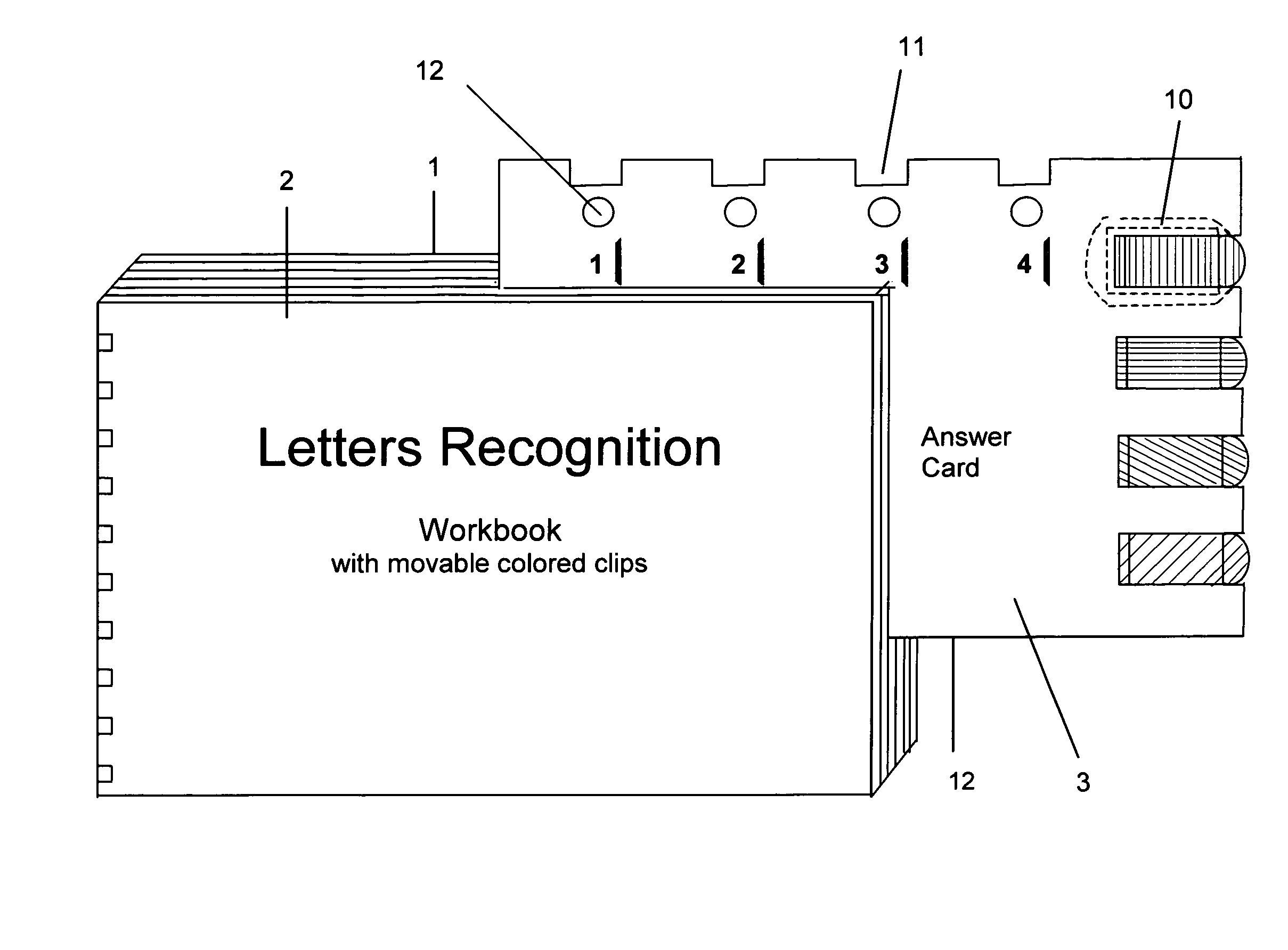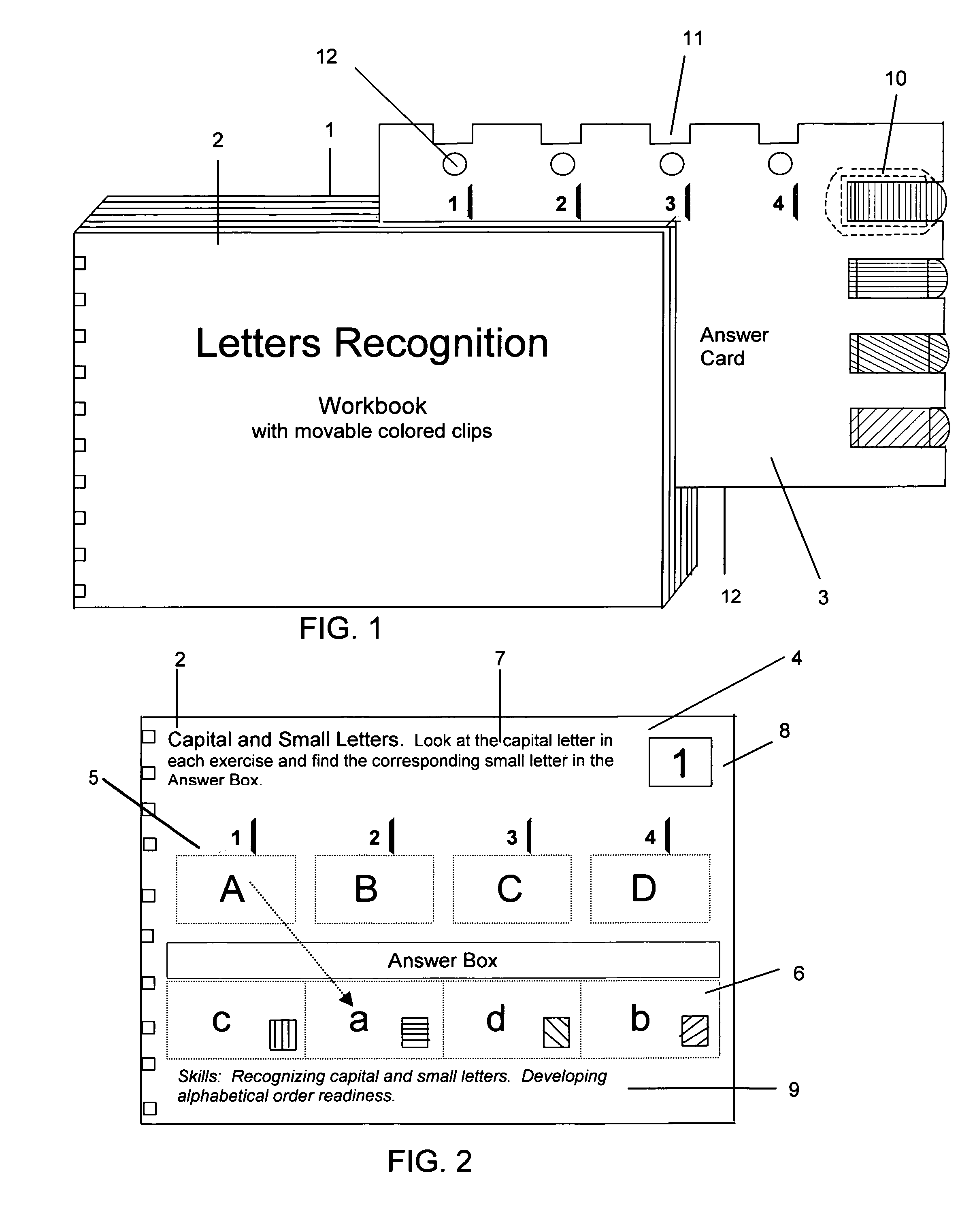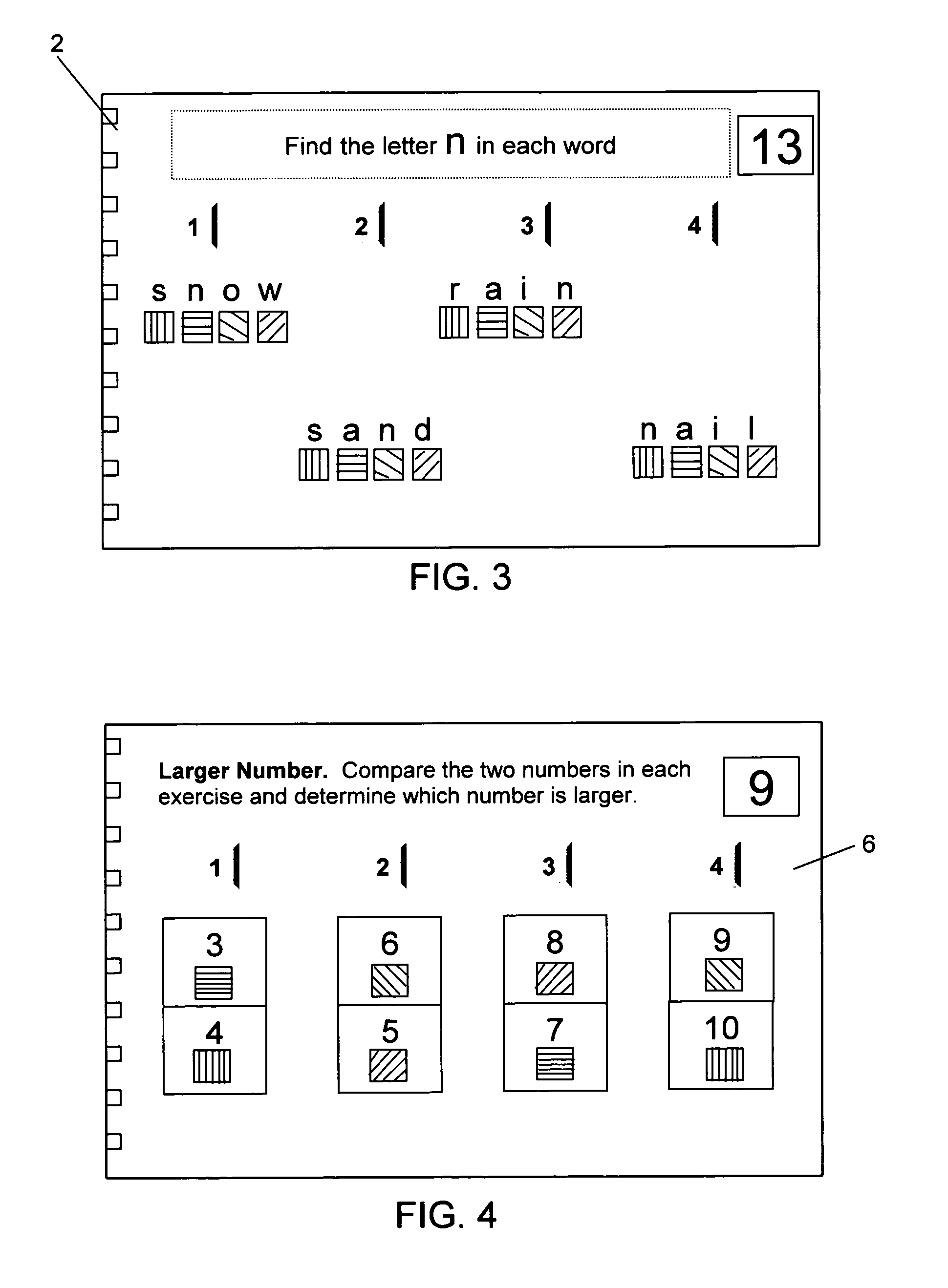Workbook with movable colored clips
- Summary
- Abstract
- Description
- Claims
- Application Information
AI Technical Summary
Benefits of technology
Problems solved by technology
Method used
Image
Examples
Embodiment Construction
[0064]Referring to FIG. 1, the workbook with movable colored clips 1, meaning the product a whole, contains a booklet 2, which is illustrated in a closed position. The booklet 2 has bound pages that can be turned and made to lie flat, and an answer card 3 that can be enclosed in the booklet and can serve as a bookmark.
[0065]Referring to FIG. 2, the booklet 2 contains a number of exercise pages one of which is illustrated as 4. Each of these pages 4 contains a section 5 with at least one but preferably multiple problems, a section 6 with color-coded selectable answers, a section 7 providing directions, and a section 8 indicating page number. The particular skills developed by the exercise page are identified in a line 9 at the bottom of the page. Referring to FIG. 2, the matching format of exercises offers four color-coded selectable answers to four problems. The colors indicated by hatching in the figure are used for coding of answers and typically are red, yellow, green, and blue. ...
PUM
 Login to View More
Login to View More Abstract
Description
Claims
Application Information
 Login to View More
Login to View More - R&D
- Intellectual Property
- Life Sciences
- Materials
- Tech Scout
- Unparalleled Data Quality
- Higher Quality Content
- 60% Fewer Hallucinations
Browse by: Latest US Patents, China's latest patents, Technical Efficacy Thesaurus, Application Domain, Technology Topic, Popular Technical Reports.
© 2025 PatSnap. All rights reserved.Legal|Privacy policy|Modern Slavery Act Transparency Statement|Sitemap|About US| Contact US: help@patsnap.com



